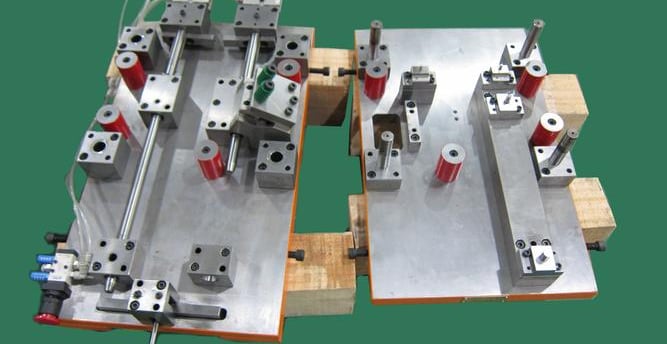How to Improve the Processing Accuracy of Stamping Mold
3/4/2025


Understanding the Importance of Processing Accuracy in Stamping Mold
Processing accuracy plays a crucial role in the production of stamping molds, directly influencing the overall quality of the products produced. Precision in the stamping process is essential, as even slight deviations can lead to defects that compromise the integrity and functionality of the finished items. By ensuring high levels of accuracy, manufacturers can produce parts that meet stringent specifications, thereby enhancing customer satisfaction. This critical aspect of manufacturing not only ensures that products fit and function as intended but also bolsters the reputation of the manufacturer in a competitive market.
Furthermore, optimizing processing accuracy in stamping molds significantly reduces material waste. When molds are precisely engineered and executed, less scrap material is generated due to defects or rework, leading to cost savings and a more efficient use of resources. Proper alignment of pressing forces and accurate material thickness allows for many components to be produced with minimal waste, thereby benefiting both the environment and the company's bottom line.
In addition to enhancing product quality and reducing waste, processing accuracy is linked closely to the lifespan of the stamping molds themselves. Molds that are manufactured with precision tend to wear more evenly and have a longer operational life, which translates into lower maintenance costs and reduced downtime for retooling. This longevity is essential for manufacturers to maintain steady production rates and reduce the frequency of mold replacements, further contributing to enhanced operational efficiency.
In conclusion, the significance of processing accuracy in stamping mold production cannot be overstated. It affects not only product quality and waste reduction but also operational efficiency and customer satisfaction. For manufacturers seeking to optimize their processes, understanding and prioritizing accuracy in their stamping operations is a foundational step toward achieving sustainable success in the industry.
Key Factors Affecting Stamping Mold Accuracy
The accuracy of stamping molds is critical for ensuring the precision of the manufactured components. Several key factors play a vital role in determining the processing accuracy of these molds, namely the selection of materials, mold design, machining processes, and environmental conditions.
Firstly, the choice of materials significantly influences the dimensional stability and durability of the stamping mold. High-quality steel alloys, such as tool steel, are preferred due to their hardness and resistance to wear. The material's thermal properties also matter, as different metals expand and contract at varying rates when subjected to heat. This can affect the mold's shape and lead to inaccuracies. Properly choosing materials that offer both strength and stability under operational conditions is essential for maintaining the desired accuracy.
Secondly, mold design is inherently tied to stamping accuracy. A well-engineered mold features optimal geometry and stress distribution, which enables consistent performance. Design considerations such as draft angles, wall thickness, and locating features are crucial elements that determine how well the mold functions during stamping operations. The implementation of advanced design techniques, including computer-aided design (CAD) systems, can help in creating precise and reproducible mold designs. This ensures better compliance with specifications and improved accuracy during the actual stamping process.
Machining processes further impact the accuracy of stamping molds. Techniques such as electrical discharge machining (EDM) and milling require meticulous execution. Any deviations during machining can lead to errors in the final product. Routine maintenance and calibration of machinery, along with skilled operators, contribute significantly to achieving high machining accuracy, which directly reflects on the stamping mold's performance.
Lastly, environmental conditions such as temperature and humidity can influence the behavior of both the mold materials and the stamping processes. Fluctuations in temperature may result in thermal expansion and contraction, while excessive humidity can affect material properties. Maintaining controlled conditions within the workspace is essential for minimizing these environmental impacts and ensuring sustained accuracy in mold processing.
Techniques to Enhance Stamping Mold Processing Accuracy
Improving the processing accuracy of stamping molds is essential for ensuring high-quality production and minimizing waste. One of the primary ways to achieve this is through the implementation of advanced machining methods. Utilizing Computer Numerical Control (CNC) machining enables precise cuts and details, enhancing the overall accuracy of the molds. This technology allows manufacturers to program complex designs with high repeatability, offering a significant advantage in achieving consistent results.
Proper alignment procedures also play a crucial role in mold accuracy. Implementing alignment tools such as laser alignment devices can greatly reduce the likelihood of misalignment during the stamping process. Ensuring that all components are accurately aligned before production can prevent defects and reduce the need for rework, thereby saving time and resources.
Quality control checkpoints must be established throughout the manufacturing process. Regular inspections during different stages of production can catch discrepancies early, allowing for timely corrections. Employing statistical process control (SPC) techniques can assist in analyzing data from the production process, identifying variations that may affect mold accuracy. By addressing these variations swiftly, manufacturers can maintain superior stamping accuracy and quality.
The integration of CAD/CAM (Computer-Aided Design and Computer-Aided Manufacturing) software is another effective approach for enhancing mold accuracy. This software enables detailed design capabilities, allowing engineers to simulate and optimize the mold's structure before actual production begins. By using CAD/CAM, manufacturers can create molds that integrate complex geometries while ensuring that design specifications are met, further improving the execution accuracy.
Maintenance practices are also pivotal in preserving the accuracy of stamping molds over time. Routine inspections and scheduled maintenance of the molds can prevent wear and tear that leads to inaccuracies. Additionally, implementing protective measures such as coating tools can extend their lifespan. By embracing these practices, manufacturers will not only enhance stamping mold processing accuracy but also ensure longevity and efficiency in their production lines.
Continuous Improvement and Future Trends in Stamping Mold Accuracy
Continuous improvement is a fundamental principle in enhancing the processing accuracy of stamping molds. Regular assessments of existing processes are vital in identifying inefficiencies and areas for enhancement. Organizations can initiate improvement cycles by employing methodologies such as Six Sigma or Lean Manufacturing. These frameworks aid in meticulously analyzing current practices, eliminating waste, and ensuring that every step in the stamping process contributes to overall accuracy.
Equally important is the investment in employee training. A skilled workforce is paramount in maximizing stamping mold features and capabilities. By providing ongoing education and professional development opportunities, companies can ensure that their employees are adept at utilizing the latest technologies and techniques. This investment not only enhances the employees' skill set but directly correlates with the accuracy and consistency of the stamping processes. Staff who are well-versed in the latest industry standards and innovations are more likely to contribute to process improvement initiatives.
Moreover, staying updated with industry advancements is essential for maintaining competitive advantage in the stamping sector. Emerging trends in stamping technology, such as the incorporation of artificial intelligence and automation, promise significant advancements in processing accuracy. These technologies can help optimize production schedules, adjust processes in real-time, and even predict potential defects before they occur. Additionally, innovative materials and composite formulations are continually being developed, offering enhanced properties for precise stamping applications.
By adopting a forward-thinking approach to managing stamping processes, businesses can not only improve their current operations but also position themselves favorably for future challenges and opportunities. The combination of continuous improvement, employee engagement, and awareness of technological advancements is key to achieving greater stamping mold accuracy in the long run.
